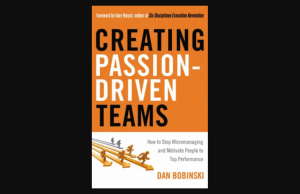A generative thinking board is necessary for reinventing a broken system, challenging goals, and identifying an organization’s larger purpose and meaning. It is thinking and actions that can advance the team to be one that is defined as high performing.
What is “generative?” It is being capable of creating, producing or reproducing behaviors. A generative behavior influencer supports oneself by supporting others. Generative learning is actively making sense of what is being taught. Generative communications is being reflective rather than reactive. And, a generative approach is coming up with unique solutions.
This is the management concept based on literature by authors Richard Chait and Cathy Trower discussed by Julie Fink, MS, CFRE, director of development at Jefferson Health New Jersey, Ventnor City, New Jersey, during her session “Guide To A Generative Thinking Board.” The presentation was made during the Association of Fundraising Professionals international event AFPICON in New Orleans.
“Generative thinking involves inventive ways to produce ideas and to tackle those habits of thinking that may limit good strategic decisions. According to Trower, generative thinking is the combination of creative thinking and problem solving without which there would be no innovation,” said Fink.
According to Fink, a generative thinking board is defined as one that challenges itself, and the organization, to think outside the box and to explore topics in new and different ways. It is characterized by exploratory thinking and deeper analysis, and in partnership with management, can begin the journey to becoming a high performing board.
Some boards are not pursuing generative thinking because there is a lack of understanding of the organization, there is avoidance by members participating in discussions when it is not their area of knowledge, there is little personal accountability, individuals are out of practice working with team and new people.
“This creates frustrations among trustees and nonprofit executives which can lead to a disengaged, underutilized board,” Fink said. “If leadership is open to taking a hard look at the key factors identified as barriers to generative thinking, than it creates an opportunity for meaning and purpose to board involvement.”
A few key factors were identified that might play a part in the board’s ability to transition into generative thinking including composition, leadership, recruitment and orientation and education, according to Fink. Therefore, the board chair and executive leadership must take steps toward empowerment and improvement of the board, including but not limited to:
- examine and guide a culture change
- create accountability to balance the power
- establish clear roles and responsibilities
- use innovative approaches to connect with diverse candidates
- and budget for continuing education
“It takes a thoughtful and strategic approach to make the transition into a generative thinking board. It needs to be intentional as it is not part of the DNA of most governing boards,” said Fink.








